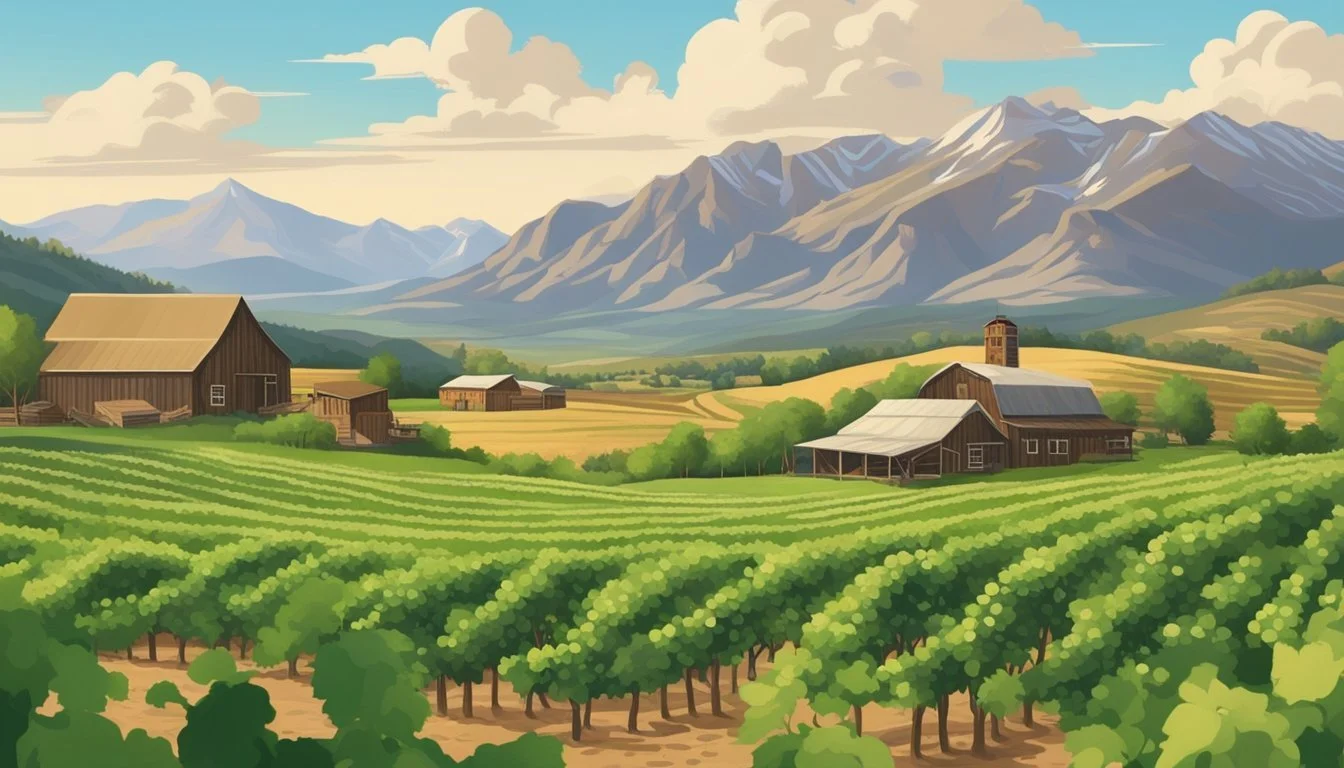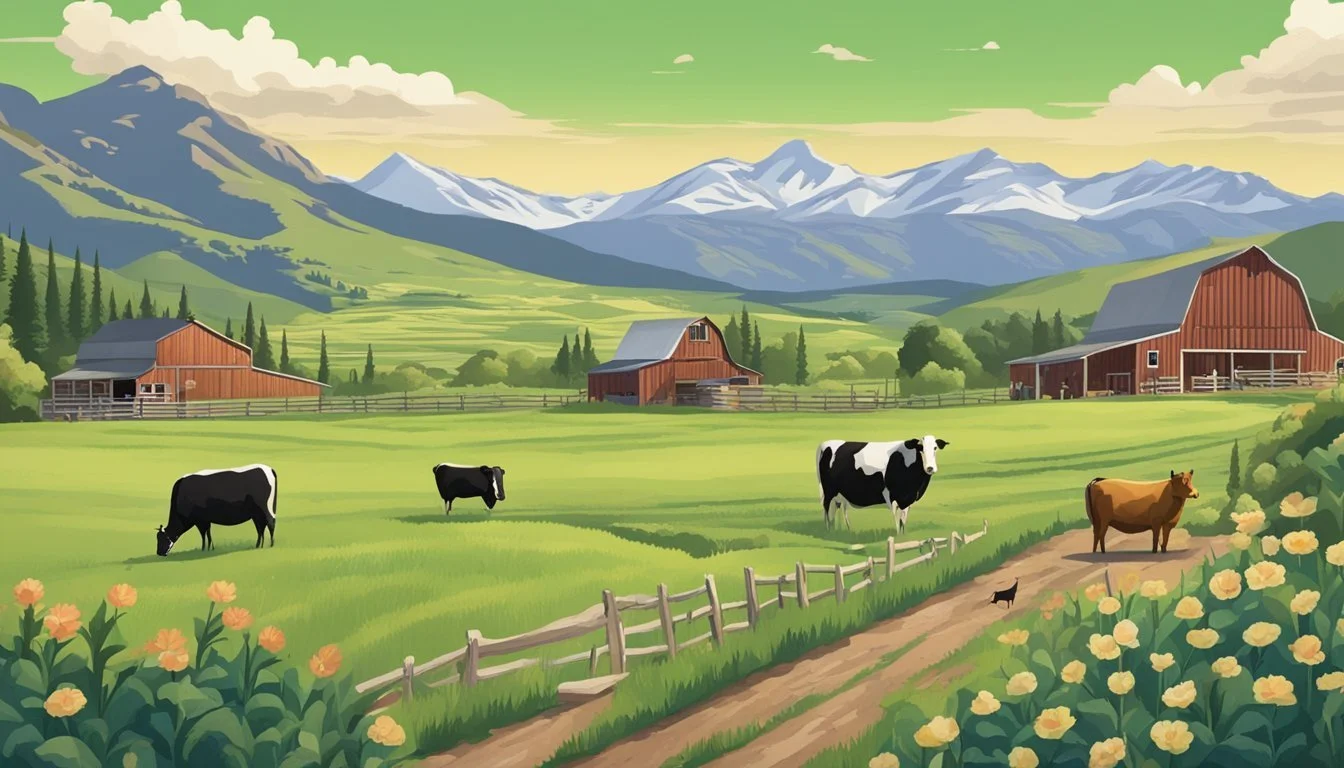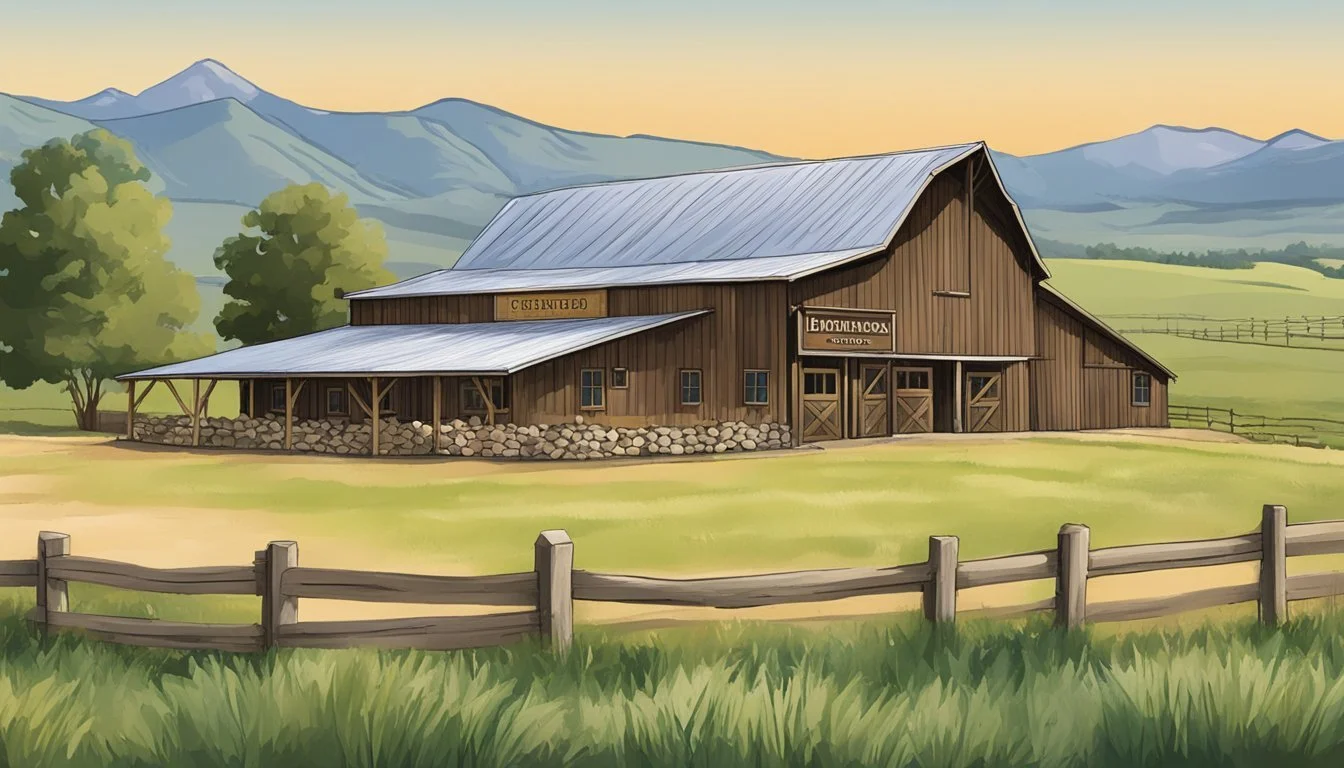Agritourism in Utah
Exploring the State's Rural Charms and Farm Experiences
Agritourism is an industry at the crossroads of agriculture and tourism that is gaining momentum in Utah. This fusion offers travelers an authentic experience, immersing them in the daily life and culture of rural communities. Utah's rich agricultural heritage, combined with its diverse landscapes, creates a perfect backdrop for agritourism. From fruit and vegetable farms to ranches and vineyards, the state is home to more than 500 century farms, testifying to the enduring legacy of farming passed down through generations.
The state has embraced this blend of industries by offering resources and support for the development of agritourism-related activities. Unique experiences, such as participating in farm festivals, picking fresh produce, and exploring the workings of a ranch, cater to an expanding market of travelers looking for sustainable and educational vacations. The Utah Office of Tourism, alongside local organizations like Utah’s Own, actively promotes agritourism, ensuring that the state’s rural economies benefit from the growing interest in these authentic experiences.
Agritourism not only bolsters the visibility of Utah’s agricultural products but also educates the public about the importance of farming to the state's history and economy. Locals and visitors alike can enjoy the fruits of labor from Utah's farmland, where the quality produce is a direct result of the state’s unique soil composition and the dedication of its farmers. With a range of agritourism options available, Utah offers an up-close and personal glimpse into the world of agriculture, fostering appreciation for the field and providing an enriching experience for visitors.
Understanding Agritourism
Agritourism in Utah encompasses a diverse range of activities that bridge the agricultural experience with tourism, providing educational and economic benefits to the state.
History and Development in Utah
Agritourism has seen a significant increase in Utah, with revenue growing more than 300% between 2002 and 2017. The state has recognized the value of agritourism, with various programs supporting expansion. Examples include u-pick farms, ranch tours, and agricultural workshops, all contributing to a broader appreciation of Utah's agricultural heritage.
Importance to Utah's Economy
Agritourism has emerged as a vital component of Utah’s economy by creating new revenue streams for farmers and ranchers. It not only aids in diversifying farm income but also promotes local produce and products, strengthening Utah's agricultural market. Furthermore, the state's agritourism industry has inspired legislative action to reduce liability for operators, encouraging more farms and ranches to open their doors to visitors.
Main Agritourism Attractions in Utah
Utah offers a rich variety of agritourism attractions that provide hands-on agricultural experiences throughout the year. From navigating intricate corn mazes to enjoying the bounty of a harvest at local farmers markets, the state's rural offerings are plentiful and diverse.
Corn Mazes and Pumpkin Patches
Utah hosts Black Island Farms, which boasts the largest corn maze in the state, covering an impressive 28 acres. During autumn, visitors can also partake in pumpkin picking, an ideal family-friendly activity. Staheli Family Farm is another noteworthy spot, offering a range of autumnal attractions.
Corn Maze: Black Island Farms
Pumpkin Patch: Jaker's Pumpkin Patch, Staheli Family Farm
Farmers Markets and Orchards
Local produce is the highlight at Utah's various farmers markets. One can find organic eggs, honey, salad greens, seasonal crops, and meats directly from the farms. Cherry Hill Farms is an example of an orchard where visitors can pick fresh apples, apricots, peaches, and more.
Farmers Market: Products like honey, organic eggs
Orchards: Cherry Hill Farms (Apples, Apricots, Cherries (how long do cherries last?))
Wagon Rides and Animal Encounters
For those looking to immerse themselves further into farm life, wagon rides provide an intimate look at the workings of a farm. Animal encounters allow individuals of all ages to connect with farm animals, which can be an educational and entertaining experience.
Wagon Rides: Available at various farms
Animal Encounters: Interactive experiences with farm animals
Each attraction offers its unique blend of agricultural education and entertainment, catering to visitors who seek an authentic farm experience amidst Utah’s scenic landscapes.
Seasonal Events and Activities
Utah graciously hosts a variety of agritourism events throughout the year that cater to the community and visitors, with special emphasis on family-friendly activities during Easter and an abundance of autumn harvest celebrations.
Easter Activities
In spring, agritourism in Utah comes to life with Easter activities. Farms across the state offer the Easter Egg-Stravaganza, where children can engage in delightful Easter egg hunts. The presence of the Easter Bunny is a common feature at these events, adding excitement for the families involved. Many locations also provide the opportunity to interact with baby animals, reinforcing the springtime theme of renewal and youth.
Autumn Harvest Celebrations
As the leaves begin to turn, Utah's agritourism pivots to Autumn Harvest Celebrations. Festivals typically include:
Pumpkin picking: Visitors hand-select their pumpkins right from the vine.
Hayrides: Scenic hayrides through the fields and orchards offer a relaxing way to enjoy the crisp autumn air.
These celebrations are not just limited to pumpkins and hayrides; they also feature corn mazes, fall produce like squash and apples, and sometimes even sunflower festivals, which paint a picturesque view of Utah's agricultural richness.
Benefits and Challenges of Agritourism
Agritourism presents a multifaceted opportunity for farmers in Utah to diversify their income and for the public to engage with agricultural life. However, this niche also brings its own set of challenges that require careful consideration and management.
Economic Impact on Farmers
Agritourism has significantly increased agritourism revenue over the years, offering economic benefits for farmers and ranchers. They have found it a viable solution to augment their income in the face of economic struggles, market variability, and intensive global competition.
Increased revenue streams: Diversification through agritourism provides alternate sources of income, making operations more financially robust.
Job creation: Agritourism can lead to the creation of additional employment opportunities for local residents.
Farmers also have to invest in safety measures, facilities suitable for visitors, and marketing strategies to protect both their resources and the public while ensuring a welcoming environment for families and visitors.
Educational Value for the Public
Agritourism serves an educational role, connecting the public with the origins of their food and the inner workings of agriculture.
Year-round education: Through various activities, visitors gain insights into farming processes and environmental stewardship.
Yet, it remains essential to deliver accurate information without overwhelming guests, balancing education with entertainment. This ensures that agritourism remains an enriching experience for individuals and families alike.
Support and Resources
Support and resources for agritourism in Utah encompass both marketing initiatives and developmental aid. Entities such as Utah’s Own Program and local universities offer valuable assistance in these respects, ensuring agritourism ventures can thrive.
Utah's Own Program
Utah’s Own is a prominent marketing program designed to bolster visibility and consumer purchase of local agriculture products, directly supporting agritourism businesses. They provide resources and assets to industry partners, which helps agritourism sites attract visitors year-round. Particularly during the challenges of COVID-19, Utah's Own has served as a critical tool in sustaining the agritourism sector by promoting local participation and patronage.
Leasing and Research Support
Leasing land for agritourism activities often serves as a foundational step for businesses in this sector. Utah State University extends support in this area through guidance on best practices and legal considerations. Concurrently, research plays a vital role in agritourism's development, and Utah State University contributes by disseminating helpful information and fostering innovations that agritourism entrepreneurs can leverage. Their insights on topics ranging from visitor experience to sustainable agriculture can significantly influence agritourism operations.
Sustainable Practices in Agritourism
In Utah, agritourism is not only a bridge between rural and urban communities but also a platform for sustainable practices that aim to protect the environment and support local agriculture for future generations.
Environmental Protection
Agritourism operators in Utah recognize the importance of conserving their landscapes. Environmental stewardship is a cornerstone of their commitment, ensuring that the natural beauty and resources are preserved. They implement a range of strategies to protect diverse ecosystems:
Soil Conservation: Maintaining healthy soil is crucial for sustainable agriculture. Techniques such as cover cropping and minimal tillage prevent erosion and loss of nutrients.
Water Conservation: Efficient water usage is practiced through methods like drip irrigation and rainwater harvesting to support crops while minimizing waste.
Habitat Preservation: Farmers allocate space for natural habitats to flourish, encouraging biodiversity and fostering a balance between agritourism activities and wildlife.
Supporting Local Agriculture
Agritourism initiatives are pivotal in nurturing Utah's agricultural sector. They boost the local economy and provide a market for locally grown food. By engaging in agritourism, they achieve the following:
Boost to Local Farmers: Agritourism provides farmers with an additional income stream, which can help maintain their livelihood and preserve agricultural traditions.
Local Food Promotion: There is a focus on serving and selling food products that originate from the region's farms, reducing food miles and highlighting the quality of local produce.
Educational Opportunities: Agritourism serves as an educational tool that informs visitors about farming practices and the importance of sustainable agriculture in Utah.
Visitor Information
Agritourism in Utah offers a unique opportunity for visitors to experience the intersection of agriculture and tourism. This section provides essential details for those planning their agritourism adventures in the state.
Planning Your Visit
When planning a visit to an agritourism facility in Utah, visitors should consider the seasonal offerings as many farms and ranches have specific times of the year when they are open to the public. For instance, fall festivals are a popular attraction, featuring local produce like apples, apricots, and peaches. Potential visitors can search for local companies and products offered through Utah's Own agritourism experiences.
Visitors to regions such as Ogden can expect an array of activities tailored to both in-state and out-of-state tourists. Key considerations to keep in mind when planning:
Seasonal Events: Check for seasonal activities and festivals.
Duration of Stay: Out-of-state visitors may plan for an average of 4.1 nights, according to past visitor profiles.
Contact and Booking Procedures
For visitors eager to book their agritourism experience, it's important to reach out to the individual facilities directly for the most accurate and updated information. Many agritourism businesses in Utah may offer online booking options, but phone inquiries can also provide a more personalized interaction.
Consumers should be prepared to:
Contact Individual Facilities: Obtain contact details via Utah's Own or the Utah Office of Tourism.
Understand Booking Policies: Farm and ranch booking procedures vary; ensure clarity on cancellation policies and visiting hours.
Visitors are encouraged to engage with these businesses well in advance to secure their visit, as some activities or tours may have limited capacity.
Conclusion
Agritourism in Utah has seen a significant rise over the years, with revenue growing more than 300% between 2002 and 2017. The diversity of experiences, from farm and ranch tours to nursery visits, appeals to a wide audience. Utah's blend of rural and urban proximity plays a vital role in the industry's development – rural farms often host agritourism activities, while those closer to urban centers see higher revenue.
Utah State University Extension has acknowledged the industry's impact by focusing on research and information dissemination. Initiatives such as the survey to understand agritourism organizations' needs underscore the commitment to bolstering the sector. Moreover, the Utah Office of Tourism celebrates National Agriculture Day, highlighting the importance of agriculture to the state’s identity and economy.
Despite its growth, agritourism in Utah faces challenges such as liability and safety concerns on farms. Nonetheless, the Utah Farm Bureau and other stakeholders continue to address these issues responsibly.
Utah's agritourism provides educational and recreational opportunities for visitors to engage with agriculture. This connection benefits both the local economy and consumer awareness. As the industry evolves, it promises to remain a key component of Utah's vibrant cultural tapestry.







